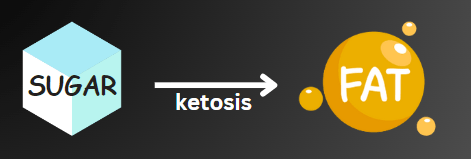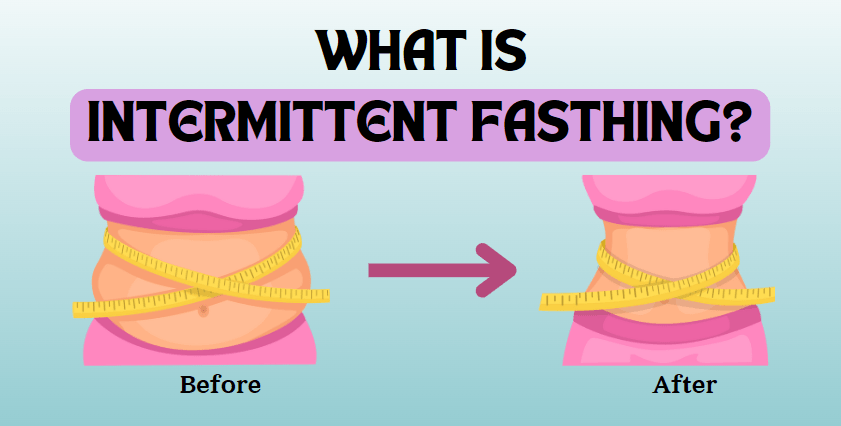What is the Best Intermittent Fasting Window to Lose Belly Fat?
You’re feeling sluggish, unhappy with your body, and ready for a change. I get it – I’ve been there. But what if I told you there’s a simple eating plan that can melt away those extra pounds, boost your energy, and make you feel like a whole new person in just 4 short weeks? It’s called intermittent fasting, and it’s about to become your new best friend.
Forget starving yourself or spending hours at the gym. Intermittent fasting is all about timing your meals to maximize fat burning and improve your health. By only eating during a certain window each day, you’ll tap into your body’s innate ability to burn fat stores for fuel. After a few days, you’ll be amazed when your food cravings fade, your stomach shrinks, and your energy skyrockets.
This isn’t just another fad diet – the science behind intermittent fasting is solid. But you don’t need to understand the biology behind it. All you need to do is follow this schedule. In just 4 weeks, you’ll look and feel better than you have in years. Get ready to intermittent fast your way to a whole new you!
What Is Intermittent Fasting?
Intermittent fasting is a dieting pattern that cycles between specific periods of eating and fasting. It’s currently very popular and has been shown to have some benefits. The most common intermittent fasting methods include fasting for 16 hours daily or fasting for 24 hours twice per week. Simply put, instead of glucose, which is the body’s primary source of energy, it turns fat into the source of energy. The fat parts stored in unwanted parts of the body are added to the blood, taken to the liver through the blood, and keto is produced through the process of ketosis. Then the cells get energy not from glucose but from keto.

The 16/8 Method
The 16/8 method involves skipping breakfast and limiting your daily eating period to 8 hours, such as 11am to 7pm. So you fast for 16 hours in between. This method is very popular and easy to stick to. Many people find that by skipping breakfast, they are able to reduce their daily calorie intake, which can lead to weight loss.
The 5:2 Diet
The 5:2 diet involves eating normally for 5 days a week and fasting for 2 non-consecutive days. On the fasting days, you eat only about 500-600 calories. This more extreme fasting leads to bigger weight loss and health benefits. However, the 5:2 diet may be difficult to sustain due to the more extreme nature of the fast.
Health Benefits of Intermittent Fasting
Intermittent fasting has been shown to have many health benefits when done sustainably:
- Weight loss. By reducing the window of time you can eat food, you tend to eat fewer calories which leads to weight loss.
- Lower heart disease risk. Intermittent fasting may lower heart disease risks like high blood pressure and high cholesterol levels.
- Improved brain function. Intermittent fasting could enhance memory, mental focus, and clarity of thinking. Some research shows it may help prevent or slow the progression of Alzheimer’s disease and other degenerative brain disorders.
- Longer life expectancy. Some research shows intermittent fasting may extend lifespan and slow down aging. Intermittent fasting seems to boost cellular repair processes and may enhance longevity.
- Reduced inflammation. Intermittent fasting can help fight inflammation in the body, which is associated with many health conditions like heart disease, diabetes, and autoimmune disorders.
Intermittent fasting is simple, inexpensive, and provides health benefits when done consistently and sustainably. By cycling between periods of eating and fasting, you can lose weight, reduce disease risks, and potentially live longer! Why not give it a try?
I am giving you a new diet plan. You must follow it step by step.
You can do this! Think of the benefits – fat burning, weight loss, increased energy and mental focus. This will change your life!
Important points as you follow this plan
During the eating window, focus on nutritious whole foods like proteins, healthy fats, and complex carbohydrates. Limit sugar, refined carbs, and processed snacks. Your body has made the switch from burning sugar to burning fat for fuel, so you’ll feel energized and focused during the fasting period. Take advantage of this time to be productive! You may even find your hunger decreasing and mental clarity increasing as the weeks go on.
Most importantly, be flexible and listen to your body. If you feel lightheaded or ill, don’t hesitate to eat. Your health and safety are the top priorities here. But do your best to push through feelings of hunger, as they will pass. The more you practice intermittent fasting, the easier it will get.
By week three, you’ll be cruising on fat-burning mode and reaping the benefits of autophagy, a cellular recycling process that ramps up during fasting. Your fat cells are shrinking, blood sugar is stabilizing and inflammation is decreasing. Keep up the great work for week four and beyond! Once you’ve adapted to the 16:8 method, you can experiment with more advanced protocols like 20:4 or OMAD (one meal a day) for even greater benefits.
Intermittent fasting is a simple but powerful habit that can transform your health and wellness. Stay consistent with it for the best results. You’ve got this – keep going! In no time, intermittent fasting will become second nature and you’ll be enjoying a leaner, healthier body and a sharper mind. Stay focused on your goals and keep your eyes on the super prize!
The 4 Week Intermittent Fasting Schedule
Are you ready for an intermittent fasting plan that will transform your body in just 4 short weeks? This beginner-friendly schedule starts off easy and builds up your fasting endurance over time. By the end, you’ll be an intermittent fasting pro!
Week 1 (3 days): The 12:12 Method

For the first 3 days, follow the 12:12 method. This means eating during a 12 hour window, such as from 7 am to 7 pm, and fasting for the other 12 hours. During your eating window, cut out sugary and processed snacks, reduce carb intake, and drink plenty of water. After 3 days, your body will start burning fat for energy. You may feel a little hungry or tired, but push through the benefits are worth it!
Week 1 (4 days): The 10:14 Method

You’re getting the hang of this! For the next 4 days, narrow your eating window to 10 hours, from 9 am to 7 pm, for example. Keep making healthy meal choices and listen to your body. Only eat when you feel truly hungry. By now, your hunger hormones should start decreasing and your energy levels rising.
Week 2 & 3: The 16:8 Method

Congratulations, you’re officially an intermittent fasting pro! This week, eat during an 8 hour window, such as from 11 am to 7 pm. Breakfast is now a thing of the past. You may experience mental clarity and increased focus. Fat loss will be noticeable at this point. Keep it up – you’re almost done!
Week 4: One Meal a Day (OMAD)
The final week, try having just one meal a day if you can, during the same 8 hour window. This turbo-charges your fat burning and the health benefits of intermittent fasting. You should feel on top of the world more than ever!! Reward yourself for completing this plan. You earned it! Stick with the intermittent fasting schedule that works for your needs and lifestyle. Keep making healthy food choices, drink plenty of water and watch your body transform before your eyes. The fat loss and energy boost will keep you motivated to make intermittent fasting a lifelong habit! You’ve got this!
Intermittent Fasting FAQs: Your Top Questions Answered
Let’s start with the basics. Intermittent fasting is a diet that alternates between eating and fasting. The most popular methods are:
- 16/8 Method: Fast for 16 hours and eat healthy meals within an 8-hour window. For example, stop eating at 7pm and resume eating at noon the next day.
- The 5:2 diet: Eat normally 5 days a week and fast for 2 non-consecutive days. On the fast days, eat 500-600 calories.
- Alternate day fasting: Fast every other day. On fast days, eat 500 calories. On feed days, eat normally.
- The warrior diet: Fast during the day and eat one huge meal at night, during a 4 hour window.
Why should I try intermittent fasting?
Intermittent fasting has some great benefits! It can help you lose weight, improve metabolic health, reduce inflammation in the body, and may even help you live longer.
When you fast, your body has to burn fat for energy instead of the glucose from food. This helps you lose excess fat, especially belly fat. Intermittent fasting also reduces insulin levels, which in turn improves insulin sensitivity. This can reduce your risk of type 2 diabetes and heart disease.
Studies show that intermittent fasting can help you live healthier for longer. When we fast, our cells initiate cellular repair processes. This includes autophagy, in which cells digest and remove old and dysfunctional proteins that build up inside cells. Autophagy helps slow down aging and reduces the risk of disease.
How do I get started?
The best way to start is to choose a method that fits your lifestyle. The 16/8 method or the 5:2 diet are easy to follow for beginners. Start slowly and build up your fasting periods over time as your body adapts.
Some tips to get started:
- Drink plenty of water and stay hydrated during fasts.
- Don’t overeat or binge during eating periods. Follow a balanced nutritious diet.
- Expect some hunger and discomfort initially. Your body needs time to adapt. The hunger hormones will regulate over time.
- Track your fasts and meals to stay on schedule. Many free and paid apps can help you do this.
- Break long fasts slowly with a small snack. Don’t shock your system with a huge meal.
- Stay busy and distracted during fasts. Do some light exercise or go for a walk. It will take your mind off the hunger.
- Ask your doctor before starting any fasting method, especially if you have any underlying health conditions.
Intermittent fasting can be a sustainable lifestyle change. Give it a try and you’ll be enjoying the benefits in no time! Let me know if you have any other questions.
Conclusion
You’re almost there – just work with the plan! Remember, it takes time for your body to adjust to burning fat instead of carbs. The first week may be tough, but push through. You’ve got this!
As you move into weeks two through four, you’ll start reaping the rewards. Your energy will soar, your focus will sharpen, and your body will transform. Before you know it, you’ll be rocking those skinny jeans again!
Trust the process. Believe in yourself. And get ready to feel absolutely amazing in that summer swimsuit. You deserve it! Now go out there and crush your intermittent fasting goals. The new you is just around the corner!
Read more articles:
(1). 10 science-backed turmeric benefits for health in 2024
(2). 4 things you need to know about a heart-healthy diet in 2024


